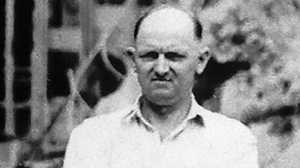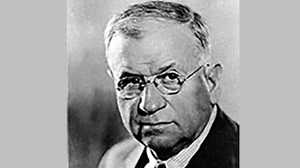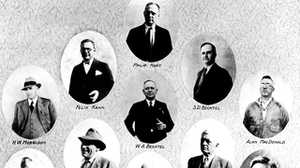The Controversial Naming of the Dam

By the time it was officially dedicated on September 30, 1935, the colossal dam project on the Southern Nevada portion of the Colorado river had been called by several different names. In the exploratory stage, the project was referred to as the Boulder Canyon Project. Boulder Canyon was replaced by Black Canyon, when Black Canyon was discovered to be a more suitable spot to place the dam. Having started its legislative life under the moniker of Boulder Canyon, the dam project simply adopted the title Boulder Dam. All of that changed, temporarily at least, on September 17, 1930, when Secretary of the Interior Ray Lyman Wilbur journeyed to the Nevada desert to drive the spike marking the project’s official start. Sweating profusely through his inappropriate wool suit, Wilbur announced, “I have the honor and privilege of giving a name to this new structure. In Black Canyon, under the Boulder Canyon Project Act, it shall be called the Hoover Dam.” Hoover was Wilbur’s boss and the current president of the United States, Herbert Hoover. He was also, in Wilbur’s estimation, “the great engineer whose vision and persistence, first as chairman of the Colorado River Commission in 1922, and on so many other occasions since, has done so much to make [the Hoover Dam] possible.”
Wilbur’s unofficial dedication was greeted with much derision, as the country at the moment was suffering through a crippling depression for which many citizens placed blame squarely on Hoover’s shoulders. The naming of a momentous public works project in his honor was seen by many as bald-faced public relations and little more. Even after Wilbur’s proclamation, the dam was referred to in the press by both names, but it was called Hoover in all official documents and congressional appropriations bills.
When Hoover lost the White House to Franklin Roosevelt in 1932, Wilbur lost his position as Interior Secretary to Harold Ickes. Shortly thereafter, Hoover also lost his dam. On May 8, 1933, Ickes decided that the dam in Black Canyon would revert to being called Boulder Dam. Ickes defended his decision by stating, “The men who pioneered this project knew it by this name.” He failed to mention that Herbert Hoover was one of those men.
Few doubted that Ickes’ action was politically motivated and personally charged; he didn’t like Hoover and rejected the notion of his name being attached to any project that would be regarded with honor. Ickes carried his snubbing of Hoover all the way to the day of the dam’s dedication. “This great engineering achievement,” Ickes said, “should not carry the name of any living man but, on the contrary, should be baptized with a designation as bold and characteristic and imagination-stirring as the dam itself.” Ickes failed to mention that dam sites named after Presidents Woodrow Wilson, Theodore Roosevelt, and Calvin Coolidge already existed in Alabama and Arizona. For his part, Hoover, in his memoirs, maintained that having the dam stripped of his name was unimportant.
Twelve years later, Hoover was vindicated when House Resolution 140 was introduced and passed by the 80th Congress. The resolution read, in part, “as President, Herbert Hoover took an active part in settling the engineering problems and location of the dam in Black Canyon…” and noted that “the construction contracts were signed under his administration, and when he left office construction had been pushed to a point where it was more than a year ahead of schedule.” On April 30, 1947, President Harry S. Truman signed the resolution and restored the name Hoover Dam to the structure.







